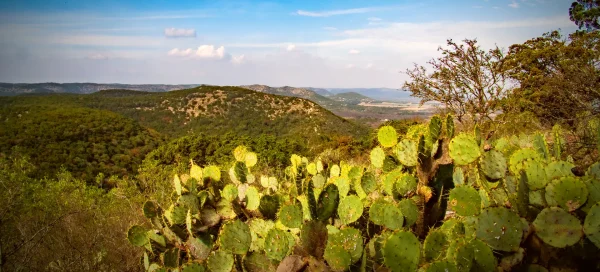Overview
The Red-legged Seriema, known scientifically as Cariama cristata, is a distinctive bird native to South America. It is particularly known for its presence in the grasslands and open woodland areas of Brazil, Paraguay, Uruguay, and Argentina. This bird is easily recognizable by its long legs, which are a striking red color, and its elongated body that culminates in a rather small head with a pointed crest. The plumage of the Red-legged Seriema is predominantly gray and brown, with some lighter shades on the underparts, allowing it to blend into the dry grassland habitats it prefers. Unlike many birds, seriemas are terrestrial, spending most of their time on the ground where they hunt for food, although they can have short, powerful flights to escape predators or roost.
The Red-legged Seriema is a carnivore, feeding on a wide range of prey, including insects, lizards, snakes, and small rodents, which it often kills by beating them against a hard surface before consumption. This bird is known for its loud, distinctive calls that can be heard over considerable distances, serving to communicate between individuals and pairs, especially during the breeding season. The calls are a defining aspect of the species’ behavior, used for mating rituals and establishing territory. The Red-legged Seriema forms monogamous pairs that defend a territory year-round, showing high fidelity to their nesting sites.
The conservation status of the Red-legged Seriema is currently of least concern, although its habitat is threatened by agricultural expansion and habitat destruction. The species has shown some adaptability to altered landscapes, but losing native grasslands to intensive farming practices poses a significant threat to their populations. Efforts to conserve the natural grassland habitats are crucial for the survival of this species, along with research to better understand their ecology and behavior in both pristine and modified landscapes.
Taxonomy
Kingdom
Phylum
Class
Order
Family
Genus
Species
Type
Physical Description:
The Red-legged Seriema is characterized by its striking appearance, with long, red legs standing against its predominantly gray and brown plumage. The body is streamlined and adapted for efficient movement through its grassland habitat, with a long neck supporting a small head topped with a crest of feathers that can be raised or lowered depending on the bird’s mood or intentions. Its beak is strong and hooked, designed for tearing apart the flesh of the prey it captures.
Adult Red-legged Seriemas typically measure about 75 to 90 cm in length, with a weight range that reflects their lean but strong build. Despite their size, they are relatively light, allowing for quick movements on the ground and the ability to take flight when necessary. Their wingspan is modest compared to their body size, suited more for short bursts of flight than long distances. The birds’ overall morphology is a perfect example of adaptation to terrestrial life in open environments, where running is more crucial than flying.

Lifespan: Wild: ~15 Years || Captivity: ~20 Years

Weight: Male & Female: 2.9-4.4 lbs (1.3-2 kg)

Height: Male & Female: 29.5-35.4 in (75-90 cm)

Wingspan: Male & Female: 29.5-35.4 inches (75-90 cm)

Top Speed: 15 mph (24 km/h)
Characteristic:
Native Habitat:
The Red-legged Seriema inhabits the open grasslands, savannas, and lightly wooded areas of South America, with a range that extends through Brazil, Paraguay, Uruguay, and northern Argentina. These habitats provide the open spaces and visibility needed for their terrestrial lifestyle and the abundance of prey species that make up their diet. The bird prefers areas with a mix of grassland and scattered trees or bushes, which offer protection and nesting sites.
Adaptations to a ground-dwelling life are evident in the Red-legged Seriema’s long legs, which allow it to cover ground quickly when hunting or escaping predators, and its nesting habits, with nests often built on the ground or in low shrubs. The species’ distribution is closely linked to the presence of suitable grassland habitats, which are increasingly under threat from agricultural expansion and urbanization, highlighting the importance of habitat conservation efforts.
Biogeographical Realms:
Continents:
Diet:
Diet & Feeding Habits:
The Red-legged Seriema is a predatory bird with a diet that includes a wide variety of prey, such as insects, lizards, small mammals, and snakes, which it is adept at killing. Its hunting technique is unique and brutal; it captures prey with its beak and then beats it against a rock or hard ground to kill it before swallowing it whole or in large pieces. This method is particularly effective against venomous snakes, making the seriema an important predator in controlling their populations.
In addition to live prey, seriemas will consume fruits and seeds, indicating a level of opportunistic feeding behavior that allows them to take advantage of various food sources available in their habitat. This dietary flexibility helps them to survive in environments where prey availability may fluctuate seasonally. The bird’s foraging behavior is a solitary or pair activity, with individuals or pairs patrolling their territories for food. The Red-legged Seriema’s beak and digestive system are well adapted to its carnivorous diet, allowing it to digest various tough, protein-rich foods.
Mating Behavior:
Mating Description:
The Red-legged Seriema forms monogamous pairs that are highly territorial, defending their chosen area throughout the year. During the breeding season, which corresponds with the local rainy season, these pairs engage in elaborate courtship displays, including loud, duetted calling sequences that strengthen pair bonds and ward off rivals. The nest, constructed by both sexes, is a simple structure of twigs and leaves placed on the ground or in low bushes.
Eggs are typically laid in two to four clutches, with both parents sharing in incubation duties for approximately 25 to 30 days. The chicks are precocial, meaning they are relatively mature and mobile from the moment of hatching, but they rely on their parents for food and protection for several weeks. Parental care is extensive, with both the male and female involved in feeding and guarding the young until they are independent.
Reproduction Season:
Birth Type:
Pregnancy Duration:
Female Name:
Male Name:
Baby Name:
Social Structure Description:
The Red-legged Seriema exhibits a territorial social structure, with pairs occupying and defending territories yearly. These territories are essential for providing the resources needed for breeding, feeding, and nesting. Social interactions outside the breeding pair are limited, primarily during the breeding season, when pairs may engage in vocal duels with neighbors to establish territory boundaries.
In some areas, individuals or pairs may be seen foraging in proximity to one another, especially in regions where food resources are abundant. However, these are not social gatherings but rather a tolerance of others within the constraints of available resources. The Red-legged Seriema’s social life is largely centered around the family unit, with strong pair bonds and parental care characteristic of the species.
Groups:
Conservation Status:
Population Trend:
The global population of the Red-legged Seriema is not precisely quantified but is believed to be stable in areas where its grassland habitats are intact. The bird is adaptable to some habitat modification as long as sufficient open areas are maintained for foraging and nesting. However, in regions where intensive agriculture or urban development has replaced native grasslands, populations have declined or become fragmented.
Conservation efforts focusing on preserving and restoring natural grasslands are essential for maintaining healthy populations of the Red-legged Seriema. Such efforts benefit this species and a wide array of flora and fauna that depend on these ecosystems. Continued monitoring and research are necessary to accurately assess population trends and identify potential threats before they lead to significant declines.
Population Threats:
The primary threat to the Red-legged Seriema is habitat loss due to the expansion of agriculture and urban development, which leads to the fragmentation or complete loss of suitable grassland habitats. The use of pesticides and other chemicals in farming can also impact the availability of prey species, further challenging the bird’s survival. Additionally, road construction and increased vehicular traffic pose direct threats to individuals, leading to increased mortality rates.
Conservation strategies must address these threats through protected area designation, sustainable land-use practices, and public awareness campaigns. Efforts to mitigate the impact of agriculture and urbanization on grassland ecosystems are crucial for the long-term conservation of the Red-legged Seriema and the biodiversity of these environments.
Conservation Efforts:
Conservation efforts for the Red-legged Seriema include habitat protection and management initiatives to preserve the grasslands and open woodlands essential for the species’ survival. Protected areas play a vital role in conserving key habitats, but equally important are efforts to manage agricultural lands in ways compatible with wildlife’s needs.
Educational programs aimed at farmers and landowners about the benefits of biodiversity and sustainable practices can help to reduce the impact of agriculture on the Red-legged Seriema and other grassland species. Research into the species’ ecology and habitat requirements is ongoing, providing the data to inform conservation strategies and land-use planning. These efforts, combined with legal protections for key habitats, offer hope for the future of the Red-legged Seriema in its natural environments.
Additional Resources:
Fun Facts
- The Red-legged Seriema can run at speeds that allow it to outrun many potential predators, relying on its legs more than its wings for escape.
- Its loud, distinctive call can be heard up to a mile away, serving as a communication tool between pairs and as a territorial warning.
- The bird’s killing of prey by beating it against a rock is a unique behavior among birds, showcasing its adaptability as a predator.
- Red-legged Seriemas have been known to follow tractors in fields to catch prey disturbed by the machinery, showcasing their opportunistic feeding habits.
- They are one of the few bird species that can eat venomous snakes, thanks to their technique of killing prey before consumption.
- The species has a long lifespan compared to many birds, living up to 15 years in the wild and even longer in captivity.
- Despite their ability to fly, Red-legged Seriemas prefer to walk or run and will only take to the air as a last resort.
- Their nests are relatively simple structures, reflecting the bird’s terrestrial nature and preference for ground-level living.
- Red-legged Seriemas are monogamous, with pairs forming strong bonds that last for many breeding seasons.
- The bird’s red legs are not just for show; they play a crucial role in thermoregulation, helping the bird to control its body temperature.







